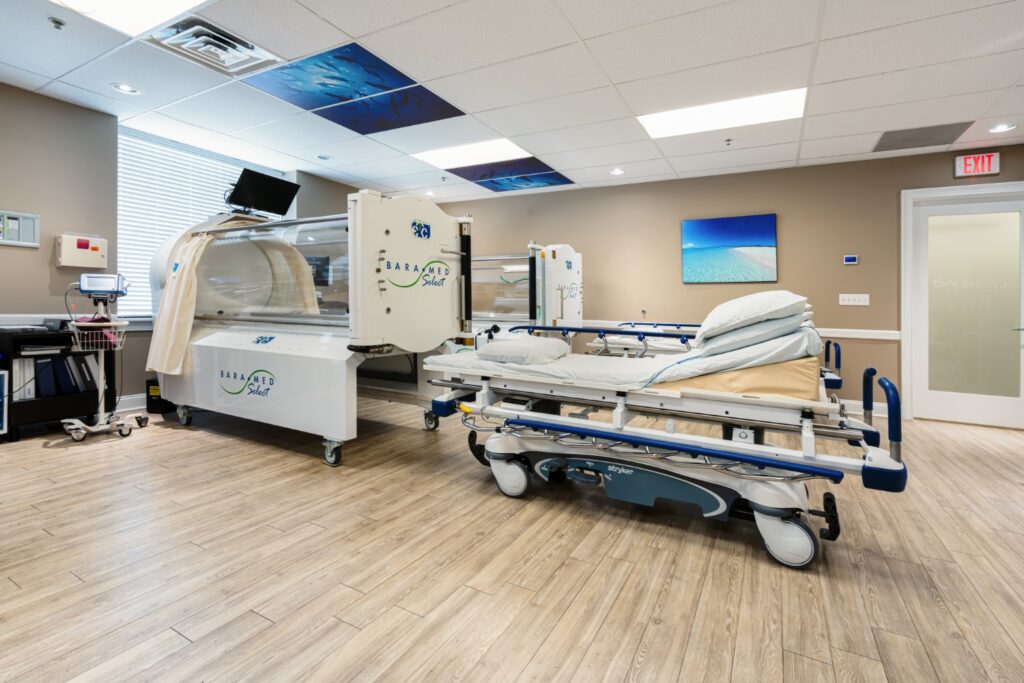Hyperbaric Chambers: Hard vs. Soft Chambers
What is the difference between hard sided hyperbaric oxygen chambers and inflatable hyperbaric chambers?
We are often asked about the difference between hard sided medical grade hyperbaric oxygen chambers and inflatable hyperbaric chambers, which are also called mild/soft hyperbaric chambers.
Portable, fabric, low-pressure hyperbaric chambers are of significant concern to both the medical community and to the large number of credentialed free-standing hyperbaric centers because the portable chambers do not meet existing safety codes. Note that these inflatable bags are referred to as “hyperbaric chambers” as opposed to “hyperbaric oxygen chambers” used in our therapy center.
Although cleared by FDA as a Class II medical device, the inflatables do not comply with several relevant codes, including installation and operational requirements of National Fire Protection Association (NFPA) 99 and American Society of Mechanical Engineers, Pressure Vessels for Human Occupancy-1 (ASME PVHO-1).
Many have reported that inflatable hyperbaric chambers have not been an effective treatment modality. The UHMS Safety Committee published this Special Report:
At Oxygen Oasis Hyperbaric Wellness Center we use only hard-sided ETC (acquired by Perry Baromedical) and Reimers hyperbaric oxygen therapy chambers (also referred to as monoplace or multiplace chambers; we offer both).
Hard Chambers for Top-Notch Care & Safety
This is why we use only medical grade hard chambers in our facility:
- Our medical grade hard chambers can deliver up to nine times more oxygen (medicine) than a soft chamber. A simple oxygen mask hooked up to an oxygen tank can deliver more oxygen than a soft chamber. For a more in-depth discussion of this issue, see Explaining the Math for Hyperbaric Oxygen by Dr. Caroline Fife (published Feb 6, 2018 in Hyperbaric Medicine / Today’s Wound Clinic and associated table.
- All valid scientific studies demonstrating the benefit of hyperbaric oxygen therapy were performed at pressures higher than those able to be achieved in a soft chamber. You can’t extrapolate those benefits at the much lower pressures generated from soft chambers.
- The FDA does not recognize soft chambers as a medical device for hyperbaric oxygen treatment, and you will not find them in any reputable hospital or medical office. The FDA only recognizes soft chambers as a device used to treat altitude sickness during transport to a definitive medical facility.
- Scientific literature shows that oxygen becomes bacteriostatic (biological or chemical agent that prevents bacteria from reproducing) at 1.5 ATA. Since soft chambers can only produce 1.3 ATA they are not able to prevent bacteria from growing; in fact, they can actually enhance the growth of some molds, fungus, and aerobic bacteria. (Note: ATA refers to atmospheres absolute. One atmosphere absolute or 1 ATA is the average atmospheric pressure exerted at sea level.)
- These inflatables are often called “hyperbaric chambers” in contrast to “hyperbaric oxygen chambers.” Be wary of confusing the two.
For greater detail on the subject, the Undersea & Hyperbaric Medical Society Safety Committee has published a Special Report that addresses the safety concerns of these inflatable chambers.
When looking for a provider of hyperbaric oxygen therapy, ensure they are accredited by The Joint Commission or the Undersea and Hyperbaric Medical Society, and inquire about the chambers they use, age of their chambers, service records, oxygen provider, and whether there are certified hyperbaric technicians on staff including an on-site safety director who has gone through an appropriate safety director course.

